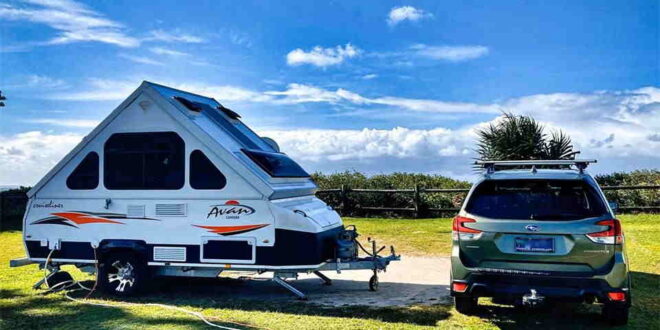When you’re setting up a trailer, whether it’s for work, travel or hauling gear, the suspension kit is one of the most important parts to get right. It’s not just about comfort. A good suspension setup keeps your load safe, improves towing stability, and saves wear and tear on everything around it.
What’s Actually in the Kit?
Trailer suspension kits Australia don’t contain just one part; they’re a collection of components that all work together to manage how your trailer moves and handles. Depending on the setup (and the type of trailer), you might see some variation, but here’s a breakdown of the core parts you’ll usually find:
Trailing arms
These arms connect the wheel hubs to the trailer frame and are responsible for controlling the wheel’s up-and-down motion. Good ones will be solid, with quality welds and bushings that can take a beating. Look for heavy-duty construction—thin metal won’t last.
Shock absorbers (optional in some kits)
Not all kits include them, but where they’re fitted, they help control bounce and dampen the movement. This stops the trailer from jolting over every bump in the road.
Braking system
You’ll often get either a hydraulic or electric braking system included. For hydraulic setups, this might involve a hydraulic coupling, brake lines, and hydraulic calipers. A proper kit should have well-matched components, not a random mix cobbled together.
Brake hubs
These are what your trailer wheels mount onto, and they play a key role in how your braking system works. If you’re using hydraulic brakes, you’ll need hydraulic-compatible hubs with the right stud pattern for your wheels.
Leaf springs or coil springs
Some kits use leaf springs (more common for heavy-duty work), while others use coils (smoother ride, better for lighter loads). Either way, the spring setup carries the weight of your trailer and absorbs shocks from the road.
U-bolts, brackets and mounting hardware
These are the unsung heroes of the kit—everything needs to be bolted securely to the trailer frame. If these parts are cheap or poorly made, the whole setup’s compromised.
Axles or stub axles
Some kits come with a solid axle that spans the trailer, while others use independent stub axles. The type you go for will affect how the trailer handles and what kind of loads it’s best suited for.
Tubing (for independent suspension systems)
With independent suspension kits, you’ll often see boxed or round tubing that houses the suspension arms. This adds structural strength and keeps everything aligned properly.
What Actually Makes a Kit “Good”?
Let’s be honest—there are plenty of kits out there that look similar at first glance. But when you dig into the details, the quality difference is clear.
Here’s what separates a reliable trailer suspension kit from one that’ll give you headaches down the track.
Solid Build Quality
Cheap kits might look alright in photos, but they often fall short on material thickness, weld quality, and bushings. If a kit uses light-gauge metal or sloppy welds, it won’t hold up to real-world use—especially off-road or with heavy loads.
Welds should be neat, consistent, and strong. No rough edges. No gaps. No shortcuts.
Compatibility Matters
Everything in the kit needs to work together. That means the hubs should match your wheel size and stud pattern. The brake setup should be designed to fit with the suspension arms. And if you’re using hydraulic brakes, the lines and fittings need to be pressure-rated and leak-free.
Poorly matched components = a nightmare when it comes time to install.
Suspension Geometry
This one gets overlooked a lot. But how the arms, axles, and springs are positioned affects handling, tyre wear, and ride comfort.
Well-designed kits will have proper camber and toe settings already built in—or at least adjustable ones. That means the wheels won’t splay out awkwardly when loaded, and your tyres will last longer.
Easy-to-Service Design
Things wear out over time—bushings, shock absorbers, brake pads. A decent kit will make it easy to access and replace parts without needing a full strip-down.
Look for kits with standard-sized bushings and bolts, rather than obscure parts that are hard to replace. And check whether the brake components are off-the-shelf items or custom parts.
Real Weight Ratings
Some kits list maximum load ratings that are… optimistic, to say the least. A quality kit will come with proper load ratings that match the materials used, the axle size, and the braking system. Don’t just go by the number—check whether it actually makes sense based on what’s included.
Leaf Spring vs Independent Suspension
There’s no one-size-fits-all here. Both setups have their place.
Leaf spring kits
These are simpler, tough, and great for heavy loads or rough work conditions. They’re also cheaper and easier to replace parts on.
Independent suspension
Smoother ride, better handling on uneven terrain, and often comes with added shock absorption. Ideal for campers, off-road trailers, or anything where comfort and control matter more.
So which one’s “better”? It depends on what you’re towing and where you’re taking it.
What to Look Out for Before Buying
If you’re picking out a suspension kit, here are a few things worth checking before you part with your money:
- Weight rating – Does it match your trailer and what you’re carrying?
- Weld quality – Are the joins clean and strong, or rough and patchy?
- Parts list – Is everything included, or will you be chasing extra fittings later?
- Brake setup – Does it come with a full hydraulic system, or will you need to add parts separately?
- Adjustability – Can you fine-tune camber or toe if needed?
- Warranty – Any backup if something fails early?
Always double-check what’s actually in the box. Some sellers list “complete kits” that still leave out key pieces like brake lines or couplings.
Worth Getting Right the First Time
Trailer suspension isn’t something you want to cut corners on. A good kit means smoother towing, better safety, and fewer issues down the road. A bad one? Constant repairs, uneven tyre wear, and possibly a trailer that sways or bounces at the worst possible time.
 khamush.com Lifestyle | Motivation | Poems
khamush.com Lifestyle | Motivation | Poems



